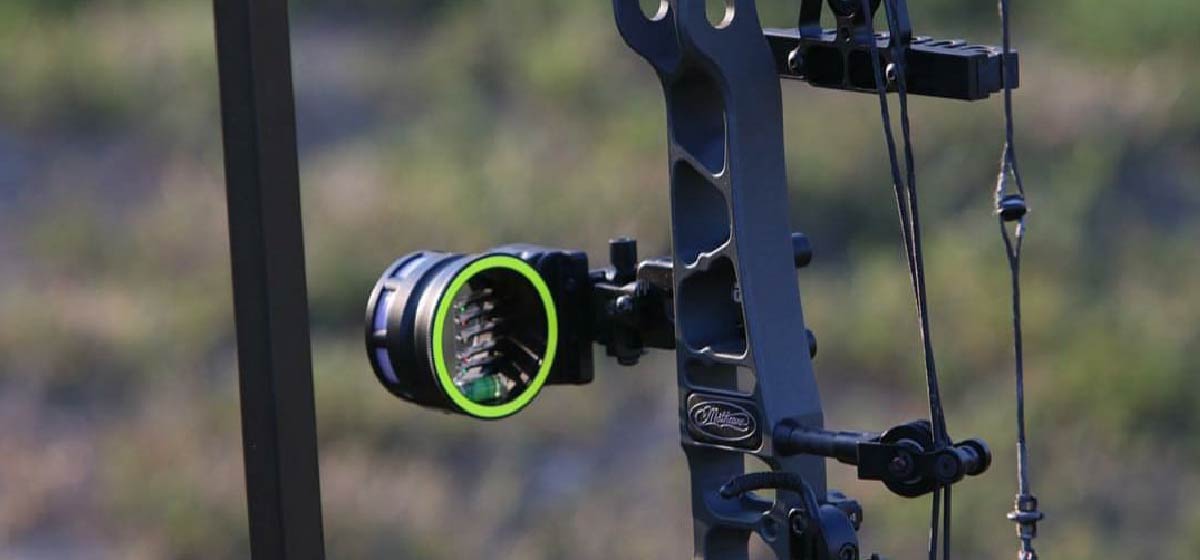How to Aim a
Bow and Arrow

Aiming a bow and arrow is obviously one of the most important parts of shooting. The best way to aim will depend on the type of bow you are using, and whether you are using sights or practicing instinctive shooting. We’ll go over each of these options to make sure you are ready to aim your bow and arrow successfully, no matter your equipment preferences.
Aiming with a Bow Sight
Sights can help you line up your shot with greater precision. First, draw your bow to full draw. Then, focus on the target with your dominant eye. Make any adjustments necessary so that when you look through the bow sight, the pin overlaps with the target. You are now ready to shoot!
If your arrows are consistently grouping somewhere outside of your target, your sight is likely not accurate. You’ll need to adjust your sight, which is a practice called “chasing your arrows.” For example, if your arrows are grouping to the left of the target, move your sight a little to the left. Now when you shoot, your arrows shouldn’t be going as far left of the target. This can apply to any direction you need.
A basic sight will provide what you need for most range shooting. More sophisticated sights are available for experienced archers who are interested in shooting long-distance.
You may want a sight with multiple pins for different distances. This is especially useful if you are a hunter who may be aiming at targets at a variety of distances through the course of a single session.
Instinctive Archery
Instinctive archery refers to the practice of shooting without sights. Some archers prefer this as a way of getting back to a traditional style of archery and building their talent and intuition. There are two basic styles of instinctive archery: gap shooting and purely instinctive (or see and shoot).
If you are gap shooting, line the point of the arrow up with your target. Judge the distance between you and your target. You’ll need to draw on a wealth of shooting experience in order to do this affectively. Based on the distance, you’ll sense how far under or over the target you should aim to account for the arrow’s drop as it travels toward your target.
For purely instinctive shooting, you simply look at the target and shoot at it without aiming. This is similar to how you might throw a ball in a game of catch, without calculating distance or taking precise aim. Archers build up muscle memory and intuitive sense of their equipment over time.
Recurve vs. Compound Bows
Recurve and compound bows require a slightly different aiming process. Typically, archers using recurve bows draw and aim their bows very quickly, while archers using compound bows will draw, take a few seconds to aim, and then release their arrows.
The first reason for this is the draw length of these bows. Compound bows are extremely difficult to overdraw, so archers using them reach a clear point where the bow is properly drawn. They can stop at this point and aim before releasing the arrow. Recurve bows are very easy to overdraw, and this can affect accuracy. Many recurve shooters therefore have a clicker, which tells them when they are at the correct draw. As soon as the clicker goes off, the archer shoots. Recurve archers therefore must aim during their draw and be ready to release as soon as they hear the clicker.
Compound bows are typically used for hunting, where it is important to get a precise aim on a moving target to ensure a clean, ethical kill. The ability to hold a bow and line up the shot is crucial for hunters. Olympic and competitive archers use recurve bows, which allow them to perfect a shooting sequence with consistent timing.
If you are using a recurve bow, you may want to invest in a clicker. If you’re just starting out, you probably won’t need one yet. A clicker depends on you having perfected your form and having exactly correct gear. As you develop strength and experience, and get gear that fits you exactly, you might want to look into getting a clicker.